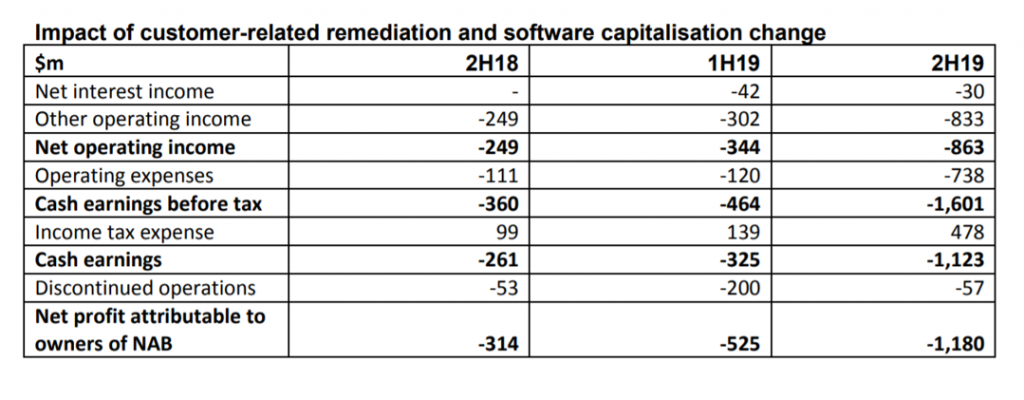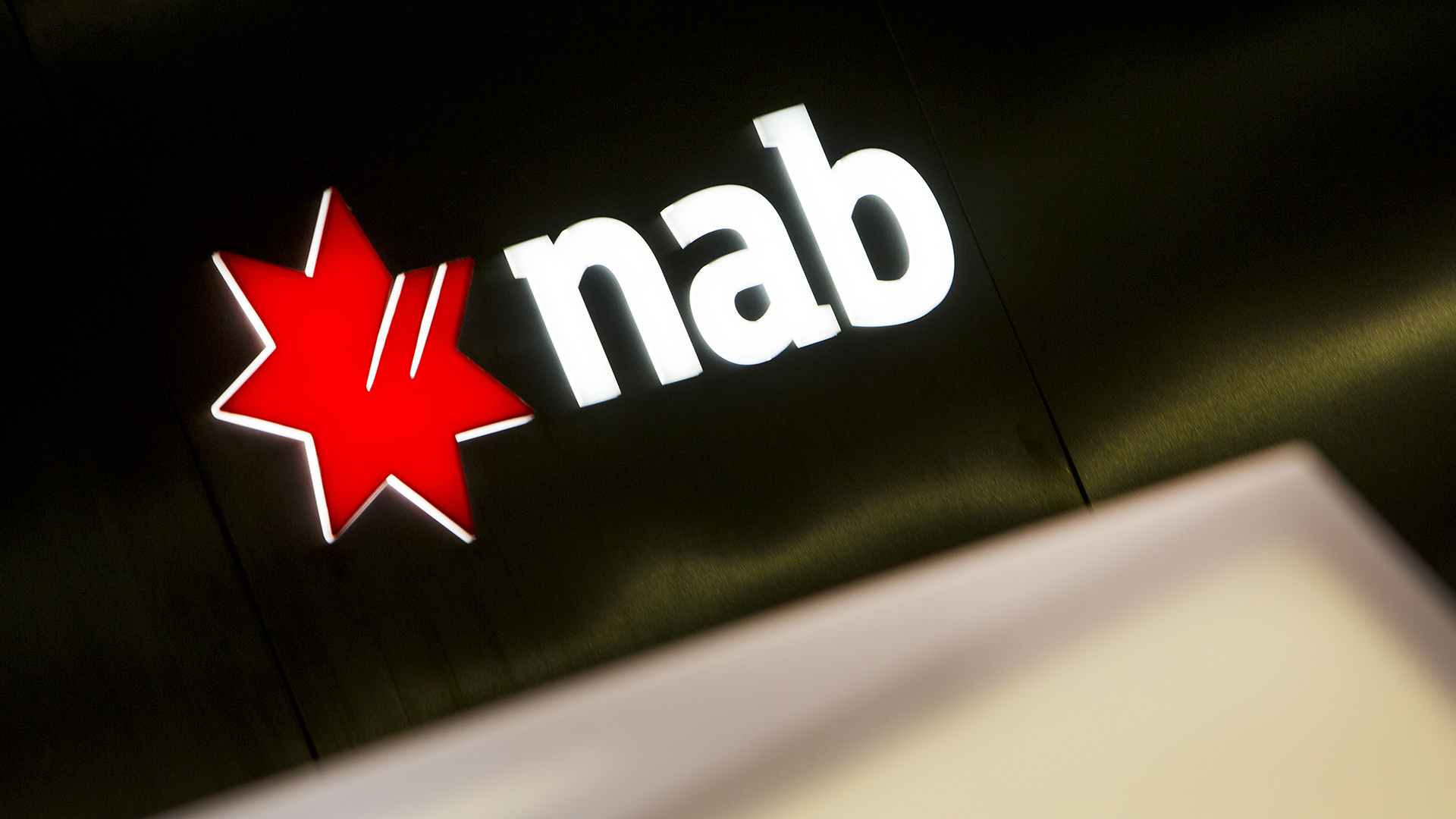National Australia Bank Ltd (NAB) today announced additional charges of $1,180 million after tax ($1,683 million before tax) relating to increased provisions for customer-related remediation and a change to the application of the software capitalisation policy. This is expected to reduce 2H19 cash earnings by an estimated $1,123 million after tax and earnings from discontinued operations by an estimated $57 million after tax.
Customer-Related Remediation
The 2H19 result will include charges of $832 million after tax ($1,189 million before tax) for additional customer-related remediation. The key driver of these additional charges is inclusion of a provision for potential customer refunds of adviser service fees paid to self-employed advisers. NAB now has in place provisions for the estimated costs and customer payments relating to all known material customer-related remediation matters based on information currently available. However, until all customer payments have been completed, the final cost of such remediation matters remains uncertain.
NAB Chief Executive Officer, Philip Chronican, said: “NAB is moving forward with rigour and discipline to make things right for customers. While we previously noted additional customerrelated remediation provisions were expected in 2H19, the size of these provisions is significant. We understand that shareholders will be rightly disappointed. However, we also recognise the need to prioritise dealing with these past issues and fixing them for customers.
“We have undertaken to significantly uplift customer remediation practices, as part of a broad program of reform to change the way we operate and ensure NAB meets customer and community expectations. We have made approximately 450,000 payments to customers with a total value of $202 million between June 2018 and August 2019, and have a dedicated remediation team of about 400 people helping to bring greater discipline and focus to remediating customers.”
Of the 2H19 charges, approximately 92% are for Wealth and Insurance-related matters, with the remainder for Banking-related matters. In combination with provisions raised in 2H18 and 1H19 which have not yet been utilised, this brings total provisions for customer-related remediation at 30 September 2019 to $2,092 million.
The key items giving rise to increased provisions for customer-related remediation include:
- Adviser service fees charged by NAB Advice Partnerships (self-employed advisers). Provisions have been increased to include allowance for customer refunds based on total ongoing advice fees received between 2009-2018 of approximately $1.3 billion, with an assumed refund rate of 36% (or approximately 55% including interest costs). Key considerations in estimating a refund rate include assumptions about circumstances where documents are not available or readily accessible, including where advisers are no longer working in the industry;
- Consumer Credit Insurance sales through certain NAB channels. This relates to a previously disclosed remediation program which arose from an ASIC industry-wide review. Provisions have been increased mainly to reflect higher refund rates based on experience to date;
- Non-compliant advice provided to Wealth customers which is being addressed as part of NAB’s ongoing wealth advice review. Provisions have been increased mainly to cover higher expected costs to undertake the program; and
- Adviser service fees charged by NAB Financial Planning (salaried advisers). Provisions have been increased to reflect higher expected costs and a higher assumed refund rate of 28% (or approximately 39% including interest costs).
Capitalised Software Policy Change
Following a review of NAB’s software capitalisation policies, the minimum threshold at which software is to be capitalised has increased from $0.5 million to $2 million, reflecting NAB’s focus on simplification and the increasingly shorter useful life of smaller software items. The change will be applied to both current and future software balances and is expected to reduce NAB’s capitalised software balance at 30 September 2019 by $494 million and NAB’s 2H19 cash earnings by $348 million (post tax). There is no impact on Group capital given capitalised software balances are already deducted from Common Equity Tier 1 capital. This change in approach will significantly
reduce the number of individual capitalised assets on the balance sheet from approximately 1,390 to 340.
Earnings Impact
Details of the expected 2H19 cash earnings impact are provided in the table below. As has been the case in prior periods, 2H19 customer-related remediation costs and capitalised software change will be excluded from FY19 and FY20 expense growth guidance of ‘broadly flat’. Further detail will be provided when NAB releases its 2019 Full Year results on 7 November 2019, including an update on progress towards achieving unquestionably strong capital requirements. The matters in this announcement remain subject to finalisation of NAB’s 2019 Full Year results, including review by the auditors.




